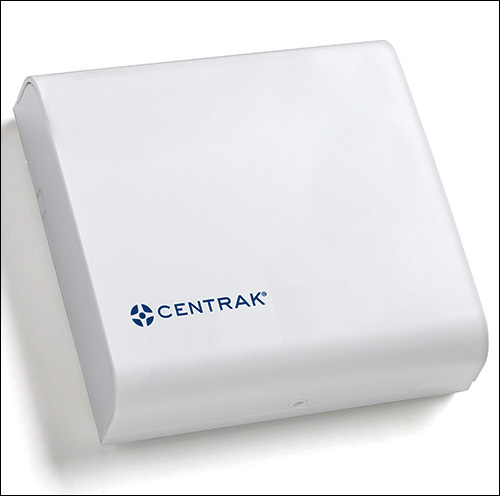May 18, 2018Real-time location technologies company CenTrak has traditionally served the health-care market, most recently by including Bluetooth Low Energy (BLE) beacons in its integrated solutions (see CentTrak Builds BLE Beacon Functionality Into RTLS Devices). Now, the company is expanding further, by providing its hardware and integration platform to markets beyond health care. Its beacon and real-time location system (RTLS) offerings are being piloted through solution providers or resellers in retail, hospitality, restaurants and other vertical markets.
"Historically, we've always been a health-care technology provider," says Ari Naim, CenTrak's president and CEO. But recently, the company's resellers and solution providers have been asking for solutions outside of that market. The transition was fueled by the company's adoption of BLE beacons into its products.

CenTrak manufactures Wi-Fi-, RFID-, Gen2IR- and ultrasound-based hardware to enable hospitals to track and manage the locations and statuses of their assets, supplies, staff members and patients. Its focus is on an integrated solution by which all system data can be collected on CenTrak's Enterprise Location Services platform on a user's server or in the cloud. The system not only collects and manages the data, but also tracks the conditions of the hardware performing the collection.
With the proliferation of BLE technology in smartphones, Naim says, many hospitals have been installing wayfinding systems that help visitors more easily navigate their way through what can be large and complex facilities with which they are unfamiliar. The systems require the installation of battery-powered beacons that transmit data to phones, which in turn employ a hospital's app to view their location based on that transmission.
The problem with battery-powered beacons, Naim says, is that they sometimes lose power. In large deployments, such as at hospitals, malls or office complexes, this can result in an ineffective system because users lack the resources to physically check each beacon on a regular basis to confirm that its battery is operating.
"That's the reason a lot of pilots fail," Naim states. "It's really easy to put together a beacon system, but if you can't provide the support, management and maintenance of the system, it may not work the way the customer needs it to." CenTrak's beacons are integrated as part of its platform, thereby making it possible to view when any beacon requires servicing.
That benefit serves not only hospitals, but other users as well, solution providers have indicated to CenTrak. The company has developed a variety of beacons, including those built into Wi-Fi units or that stand alone, and the beacon devices are now being piloted at casinos, shopping centers, restaurants and other locations.
At casinos, beacons could enable a VIP to be identified as he or she enters the premises. The individual's smartphone captures the beacon transmission, and the app forwards that data to the software, which identifies the arriving VIP. That individual could then access specific areas, or signal personnel to provide additional services. In office buildings, the beacons can be used to identify how many people are using specific offices or conference rooms, as well as when. Factories could also utilize the technology to track the flow of people through their facilities.
In most cases, Naim says, users seek an integrated approach that would enable not only the management of beacon health, but also the ability to build in other solutions over time. Potential users could require more granular location data, Naim notes, that could prompt the system's expansion to include RFID, Gen2IR or other technologies as well.
CenTrak refers to these RTLS technologies as Clinical Grade Locating (CGL), which can provide added benefits including improved quality of care, security and safety. For instance, Naim says, "When it comes to safety, there's only so far that BLE can take you. It's not designed to provide the kind of accuracy" that might be required to identify, within feet or inches, where an individual or item is located.
Beacons within a shopping mall, for example, can help consumers to navigate toward a store that is offering coupons or discounts on specific products. But once that function is in place, the mall may want to do more. With RFID or other location technologies, they might wish to track the movements of security guards as they monitor the site after hours, with data and alerting, that could reside on the same platform hosting the beacon system. By using RTLS technology, Naim explains, management would have more precise location data to ensure that they know where a guard has been, or is, in real time.
In the meantime, Naim reports, CenTrak continues to provide its solutions for the health-care market. The company's offerings include not only systems for managing assets and individuals, but also solutions to ensure hand-hygiene compliance. "We are still very much focused on health care," he says.


